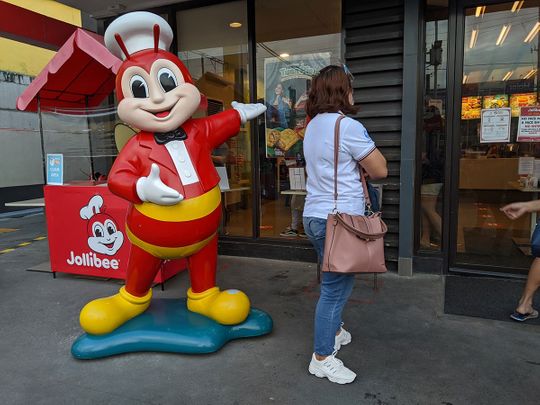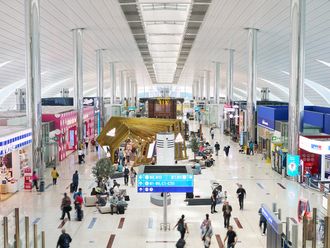
Manila: Jollibee Foods Corp., the largest Philippine restaurant operator, is looking toward foreign expansion and "opportunities" created by COVID-19 as it rebounds after historic losses induced by the pandemic.
After a restructure, Jollibee CEO Ernesto Tanmantiong plans to open 450 restaurants around the world this year while looking for acquisitions that could be funded with the company's 57.5 billion pesos ($1.2 billion) in cash and short-term investments. Tanmantiong still hopes to achieve a long-term goal of turning the Manila-based company into one of the world's top five restaurant operators.
Jollibee posted a 11.5 billion peso net loss last year - its first annual loss in at least three decades - as dining out was hammered by the virus. "There are opportunities coming out of the pandemic," Tanmantiong said. "We are constantly assessing these opportunities."
Looking abroad
Jollibee, like restaurant chains around the world, faces a landscape altered by COVID-19. The Philippines sank into recession in 2020, and the strength of its expected recovery may be weaker than initially thought amid an escalation in cases and delayed national vaccination campaign.
It has the second-highest number of infections in Southeast Asia, and mobility curbs imposed over the last year have hurt businesses - with restaurants and tourism-related ventures among the hardest hit.
Prolonged pain
"Jollibee is betting long term that traffic will improve. It's really a play on that," Gerard Abad, who helps manage 25 billion pesos as chief investment officer at AB Capital & Investment Corp., said. "Companies that succeed are those that make a bet when the environment is tough, but this looks like it will still be prolonged."
In a bid to counter the impact of the virus, Jollibee - known for dishes like crispy fried chicken and sweet spaghetti - has spent 7 billion pesos on what it calls a business transformation, including upgrades to its delivery and online sales platform.
Now that it's on stable financial footing, Tanmantiong said the company can make acquisitions as big as The Coffee Bean & Tea Leaf, its largest purchase ever at $350 million in 2019. There are brands it is interested in, "except that at this time we cannot reveal them yet because we're doing proper due diligence and assessment," he said.

Overseas focus
Jollibee is pushing for more expansion abroad than at home for a second year. Some 80 per cent of 2021's new stores will be overseas and this will be "equally split" among China, North America and Southeast Asia, Tanmantiong said. By 2025, half of its sales will come from abroad - a goal the pandemic pushed back by a year or two, he said.
At the end of 2020, 58 per cent of sales came from the Philippines. "We are now in expansion mode in preparation for the full recovery from the pandemic and this will continue in the next few years," Tanmantiong said. "We are investing more in foreign markets especially in markets where they have recovered fast from the pandemic."
While Jollibee closed 486 stores in 2020, it also opened some new ones, and overall had 147 fewer open at the end of last year compared to the end of 2019. Jollibee had more than 5,800 outlets in 33 markets worldwide at the end of last year.
Return to form
Tanmantiong said he plans to bring back Jollibee's earnings and growth to pre-pandemic levels by 2022, and double its organic business in four to five years. The restructuring and authorities' easing of virus measures put Jollibee in the black in the fourth quarter last year, ending three straight quarters of losses and helping lift its cash balance by 2.3 per cent to 23.4 billion pesos by the end of 2020.
Jollibee is seen to post a 4.12 billion peso net income this year - jumping to 6.16 billion pesos in 2022 - according to averages of analyst estimates by Bloomberg. The estimates are "attainable," Tanmantiong said. "The challenge is really the availability of the vaccine and how soon we can achieve herd immunity."








